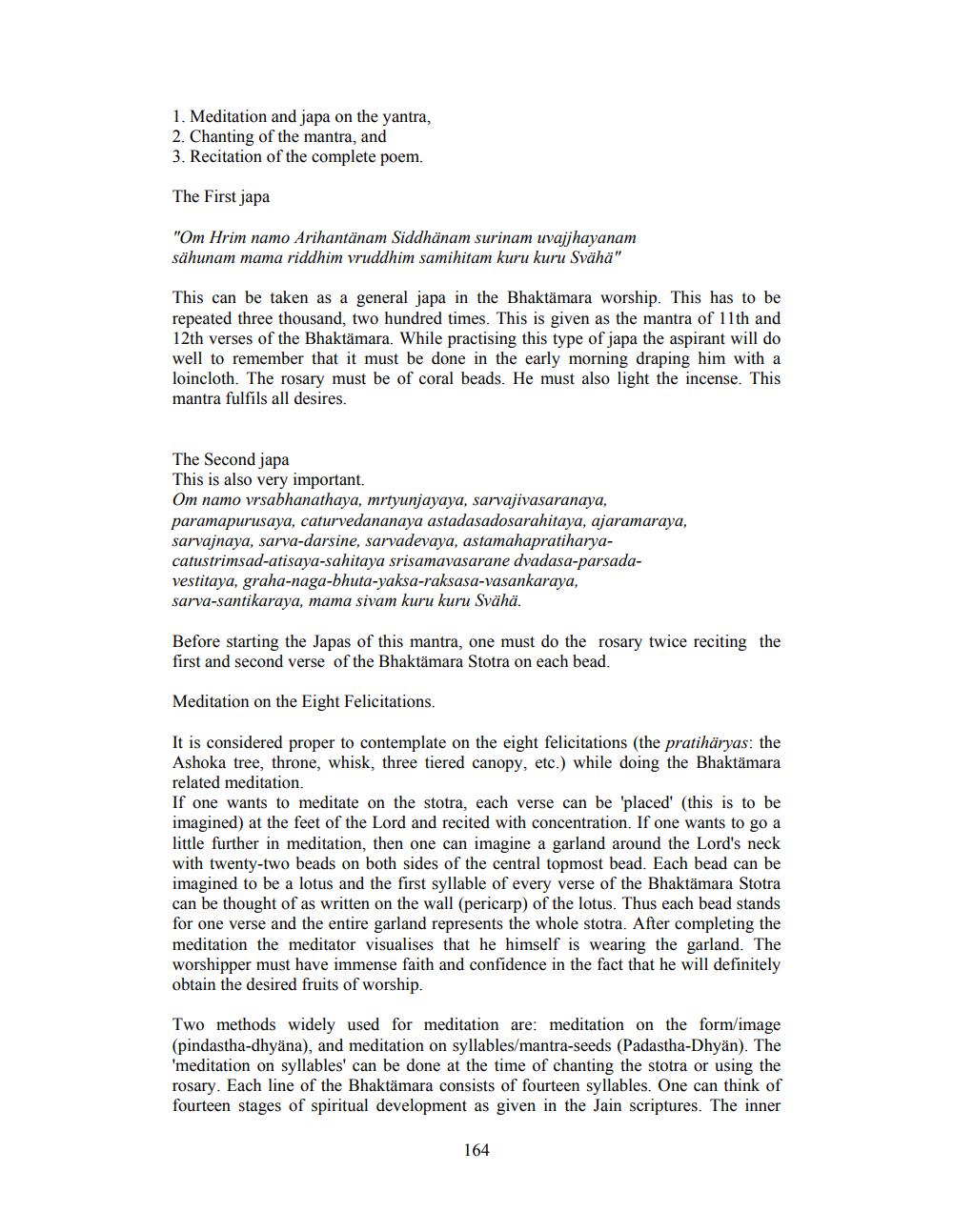________________
1. Meditation and japa on the yantra, 2. Chanting of the mantra, and 3. Recitation of the complete poem.
The First japa
"Om Hrim namo Arihantänam Siddhänam surinam uvajjhayanam sähunam mama riddhim vruddhim samihitam kuru kuru Svähä"
This can be taken as a general japa in the Bhaktämara worship. This has to be repeated three thousand, two hundred times. This is given as the mantra of 11th and 12th verses of the Bhaktämara. While practising this type of japa the aspirant will do well to remember that it must be done in the early morning draping him with a loincloth. The rosary must be of coral beads. He must also light the incense. This mantra fulfils all desires.
The Second japa This is also very important. Om namo vrsabhanathaya, mrtyunjayaya, sarvajivasaranaya, paramapurusaya, caturvedananaya astadasadosarahitaya, ajaramaraya, sarvajnaya, sarva-darsine, sarvadevaya, astamahapratiharyacatustrimsad-atisaya-sahitaya srisamavasarane dvadasa-parsadavestitaya, graha-naga-bhuta-yaksa-raksasa-vasankaraya, sarva-santikaraya, mama sivam kuru kuru Svähä.
Before starting the Japas of this mantra, one must do the rosary twice reciting the first and second verse of the Bhaktämara Stotra on each bead.
Meditation on the Eight Felicitations.
It is considered proper to contemplate on the eight felicitations (the pratihäryas: the Ashoka tree, throne, whisk, three tiered canopy, etc.) while doing the Bhaktämara related meditation. If one wants to meditate on the stotra, each verse can be placed' (this is to be imagined) at the feet of the Lord and recited with concentration. If one wants to go a little further in meditation, then one can imagine a garland around the Lord's neck with twenty-two beads on both sides of the central topmost bead. Each bead can be imagined to be a lotus and the first syllable of every verse of the Bhaktämara Stotra can be thought of as written on the wall (pericarp) of the lotus. Thus each bead stands for one verse and the entire garland represents the whole stotra. After completing the meditation the meditator visualises that he himself is wearing the garland. The worshipper must have immense faith and confidence in the fact that he will definitely obtain the desired fruits of worship.
Two methods widely used for meditation are: meditation on the form/image (pindastha-dhyäna), and meditation on syllables/mantra-seeds (Padastha-Dhyän). The 'meditation on syllables' can be done at the time of chanting the stotra or using the rosary. Each line of the Bhaktämara consists of fourteen syllables. One can think of fourteen stages of spiritual development as given in the Jain scriptures. The inner
164




